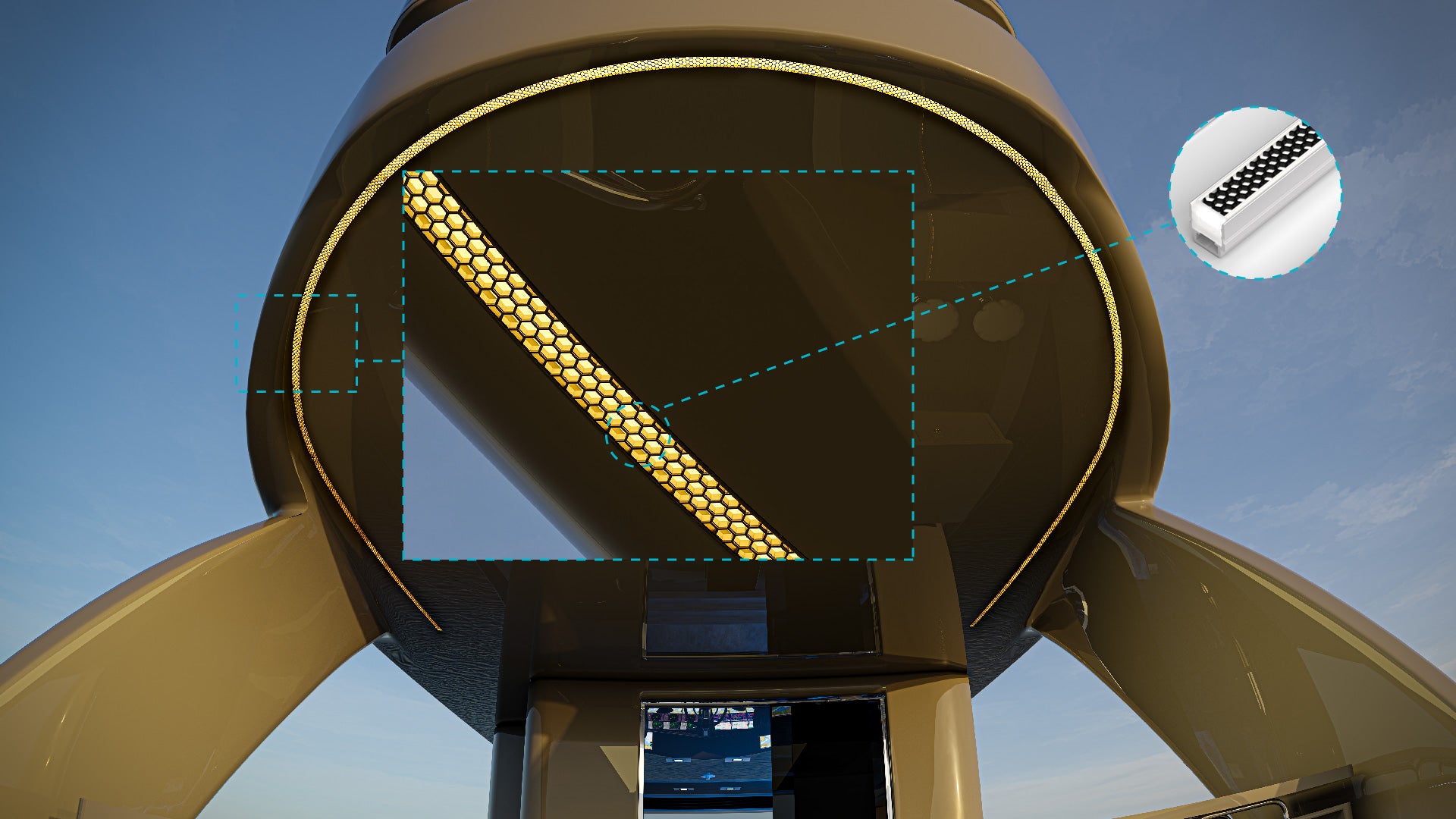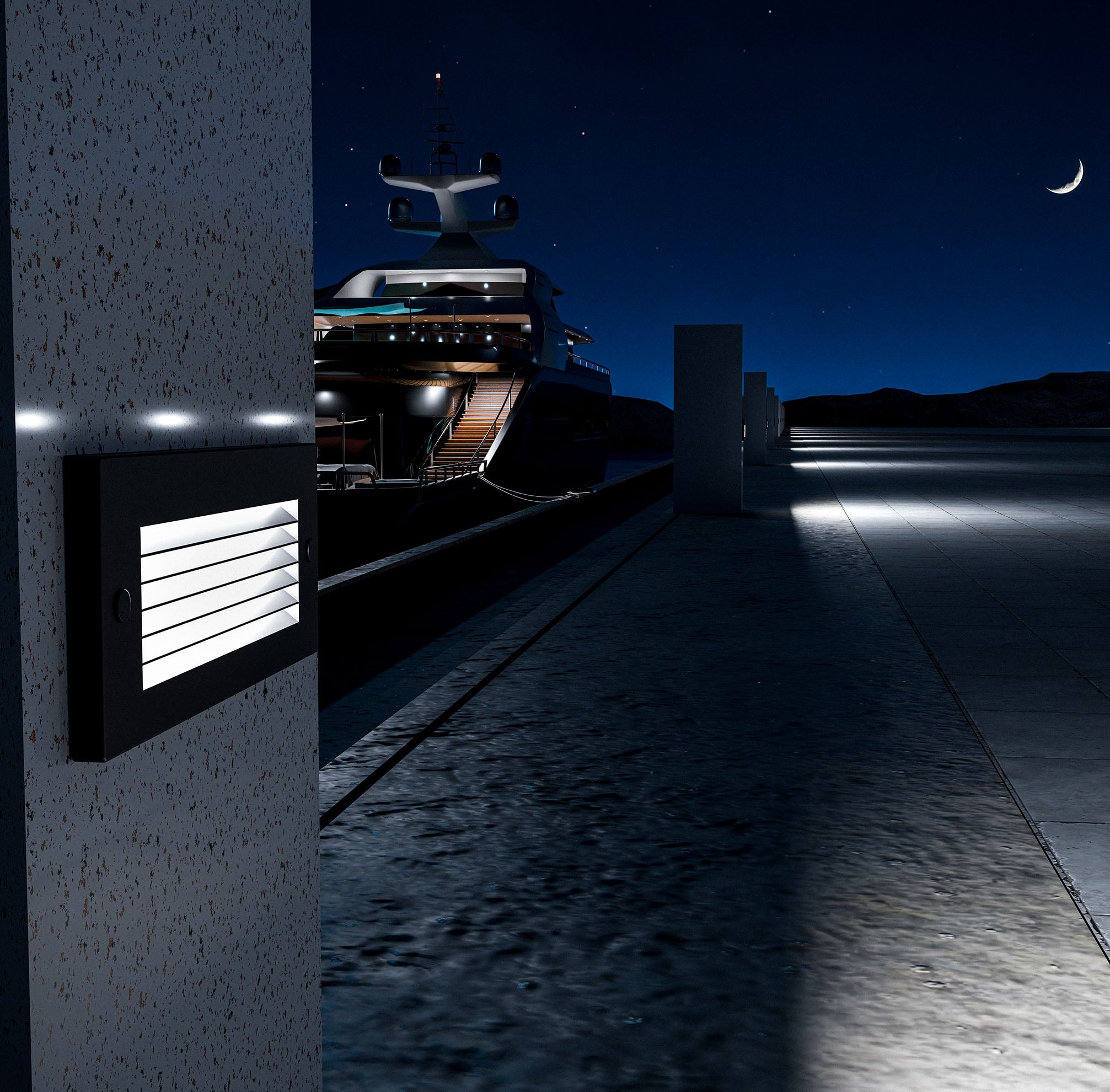Marine environments are among the harshest settings for lighting fixtures, with exposure to saltwater, high humidity, UV radiation, and temperature fluctuations. The material used in marine lighting must withstand these challenges while maintaining functionality and aesthetics. Among the many materials available, 316 stainless steel (SS) stands out as the top choice for marine-grade lighting due to its exceptional corrosion resistance, strength, and durability. This blog explores why 316 SS is the ideal material for marine lighting, comparing it to alternatives and showcasing its advantages in various applications.
What Makes Marine Environments So Challenging?
Corrosive Saltwater and Humidity
Marine environments expose lighting fixtures to saltwater and moisture, which accelerate corrosion. Salt can infiltrate cracks and crevices, leading to pitting corrosion in less resistant metals. This can compromise the structural integrity and appearance of the fixtures over time.
Temperature Variations and UV Exposure
Boats and docks experience wide temperature fluctuations, from freezing cold nights to intense sunlight during the day. These changes can cause thermal stress in metals, leading to warping or weakening. UV radiation also degrades surface finishes, making corrosion more likely in non-resistant materials.
Mechanical Wear and Impact
Marine lighting is subjected to constant motion, vibrations, and impacts from waves, equipment, or foot traffic. This mechanical stress requires materials that can withstand daily wear and tear without cracking, bending, or breaking.
Key Properties of 316 Stainless Steel
High Corrosion Resistance
316 SS contains molybdenum, an alloying element that significantly improves its resistance to pitting and crevice corrosion. Unlike other metals, it performs exceptionally well in environments with high chloride content, such as seawater. This makes it an excellent material for fixtures directly exposed to salt spray or submerged underwater.
Strength and Durability
316 SS boasts high tensile strength, which enables it to endure mechanical stress and impacts. Its robustness ensures that fixtures retain their shape and functionality even in rough conditions, such as stormy seas or heavy use on docks.
Aesthetic Appeal and Longevity
The polished, shiny finish of 316 SS is not just about looks—it resists tarnishing and staining, maintaining its sleek appearance over time. This makes it a preferred material for lighting fixtures on luxury yachts or high-end docks, where aesthetics are as important as functionality.
Comparing 316 Stainless Steel to Other Metals
316 SS vs. 304 Stainless Steel
While 304 SS is another popular choice for stainless steel applications, it lacks the molybdenum found in 316 SS, making it less resistant to saltwater corrosion. Over time, 304 SS is more prone to pitting and rust when exposed to marine environments, reducing its lifespan and reliability.
316 SS vs. Aluminum
Aluminum is lightweight and cost-effective, but it’s not as strong or corrosion-resistant as 316 SS. Aluminum can corrode and weaken when exposed to saltwater unless it is coated or anodized, which adds maintenance concerns. Additionally, aluminum lacks the premium aesthetic finish of 316 SS.
316 SS vs. Brass
Brass is often used in marine environments due to its corrosion resistance, but it is softer than stainless steel and more prone to dents and scratches. Brass can also tarnish over time, requiring regular polishing to maintain its appearance, unlike the low-maintenance shine of 316 SS.
316 SS vs. Coated Metals
Metals with protective coatings may initially offer corrosion resistance, but if the coating chips or wears off, the underlying material becomes vulnerable. Since 316 SS doesn’t rely on coatings for protection, it offers consistent resistance to corrosion throughout its lifespan.
Why 316 Stainless Steel is Ideal for Marine-Grade Lighting
Performance in Saltwater and Harsh Environments
316 SS is specifically designed to withstand the harsh conditions of marine environments. Its ability to resist corrosion and maintain structural integrity in saltwater makes it the material of choice for marine lighting. Whether it’s for underwater installations or fixtures exposed to splashes, 316 SS provides unmatched reliability.
Low Maintenance Requirements
Lighting fixtures made from 316 SS require minimal upkeep. Unlike materials that need regular polishing, sealing, or replacing, 316 SS retains its functionality and appearance with little effort. This saves time and costs over the long term, making it ideal for marine applications where maintenance access may be challenging.
Enhanced Safety and Reliability
In marine lighting, safety is paramount. Corroded or weakened fixtures can fail, leading to accidents or navigation issues. The durability of 316 SS ensures that fixtures remain securely in place and functional, providing reliable illumination for docks, decks, and onboard spaces.
Applications of 316 Stainless Steel in Marine Lighting
Deck and Pathway Lighting
316 SS is perfect for lighting fixtures installed on decks or walkways, where they are exposed to constant foot traffic and salt spray. Its strength and corrosion resistance ensure long-lasting performance in these high-traffic areas.
Underwater and Submersible Lighting
For underwater applications, such as lighting pools, fountains, or boat hulls, 316 SS is an ideal choice. Its ability to resist prolonged exposure to water and its high resistance to pitting make it reliable for submersible use.
Exterior Fixtures on Boats
316 SS is often used for exterior boat lighting, where it must endure constant exposure to saltwater, sunlight, and impacts. Its polished finish enhances the appearance of luxury yachts, while its corrosion resistance ensures functionality in all weather conditions.
316 stainless steel is the ultimate material for marine-grade lighting, offering superior corrosion resistance, strength, and durability compared to alternatives. Its low-maintenance requirements and aesthetic appeal make it the perfect choice for both functional and decorative marine lighting applications. Whether you’re outfitting a dock, a luxury yacht, or underwater fixtures, choosing 316 SS ensures long-lasting performance and reliability. Explore K2 Lighting’s range of 316 stainless steel fixtures to experience the unmatched quality and benefits for yourself.





